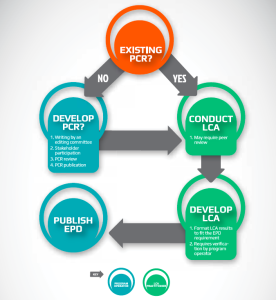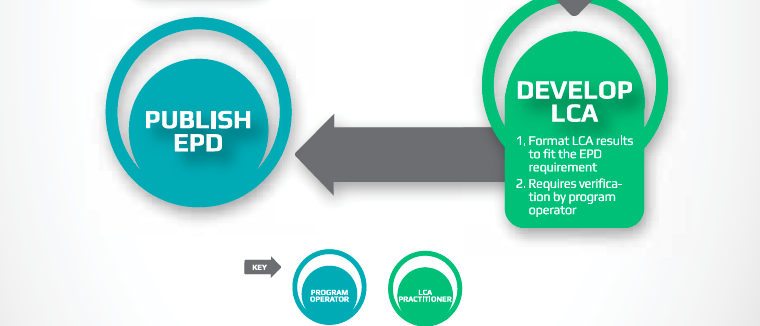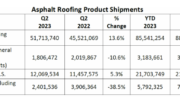The sustainability movement has impacted the building industry in many ways. Today’s architects, owners and occupants have much greater expectations for the environmental performance of the buildings they design, operate and dwell in. Part of this expectation is focused on the components that make up the building. For example, did the wood come from responsibly harvested forests? Is the metal made of recycled material? Do the paint and interior finishes contain volatile organic compounds (VOCs)?

An EPD is developed by applying a Product Category Rule. PCRs are developed, maintained and warehoused by program operators. Examples of program operators include ASTM, CSA, ICC-ES, Environdec and UL Environment. Program operators also verify that an EPD and its associated life-cycle assessment conform with ISO 14025 and the ISO 14040 series. PCR development is commonly a collaborative effort between industry associations, manufacturers, and/or others. IMAGE: Quantis US
In response to the growing demand for environmental product information, building component manufacturers have begun rolling out environmental product declarations, or EPDs.
It’s a term now commonly heard, but what are they? EPDs are often spoken in the same breath as things like LCA (life-cycle assessment), PCRs (product category rules) and many other TLAs (three-letter acronyms). The fact is they are all related and are part of an ongoing effort to provide as much transparency as possible about what goes into the products that go in and on a building.
“An EPD is a specific document that informs the reader about the environmental performance of a product,” explains Sarah Mandlebaum, life-cycle analyst with Quantis US, the Boston-based branch of the global sustainability consulting firm Quantis. “It balances the need for credible and thorough information with the need to make such information reasonably understandable. The information provided in the document is based on a life-cycle assessment, or LCA, of the product, which documents the environmental impacts of that product from ‘cradle to grave.’ This includes impacts from material production, manufacturing, transportation, use and disposal of the product. An EPD is simply a standardized way of communicating the outcomes of such an assessment.”
The concept of product LCAs has been around for some time and has often been looked at as a way of determining the sustainability of a particular product by establishing the full scope of its environmental footprint. The basic idea is to closely catalog everything that goes into a product throughout its entire life. That means the energy, raw materials, and emissions associated with sourcing its materials, manufacturing it, transporting it, installing it and, ultimately, removing and disposing of it. In the end, an LCA results in a dizzying amount of data that can be difficult to translate or put in any context. EPDs are one way to help provide context and help put LCA data to use.
“The summary of environmental impact data in the form of an EPD can be analogous to a nutrition label on food,” says Scott Kriner, LEED AP, technical director of the Metal Construction Association (MCA), Chicago. “There is plenty of information on the label, but the information itself is meaningless unless one is focused on one area. An LCA determines the water, energy and waste involved in the extraction of raw materials, the manufacturing process, the transportation to a job site and the reclamation of waste at the end of the useful life of a product. With that data in hand, the various environmental impact categories can be determined and an EPD can be developed to summarize the environmental impact information.”




Be the first to comment on "EPDs Provide a New Level of Environmental Transparency to Building Products"